I have access to the AMD pro series of GPU’s, the pro moniker in the name should indicate that they’re meant for workstation tasks, they can game, only it would cost 4 times more. But let’s check them out shall we.
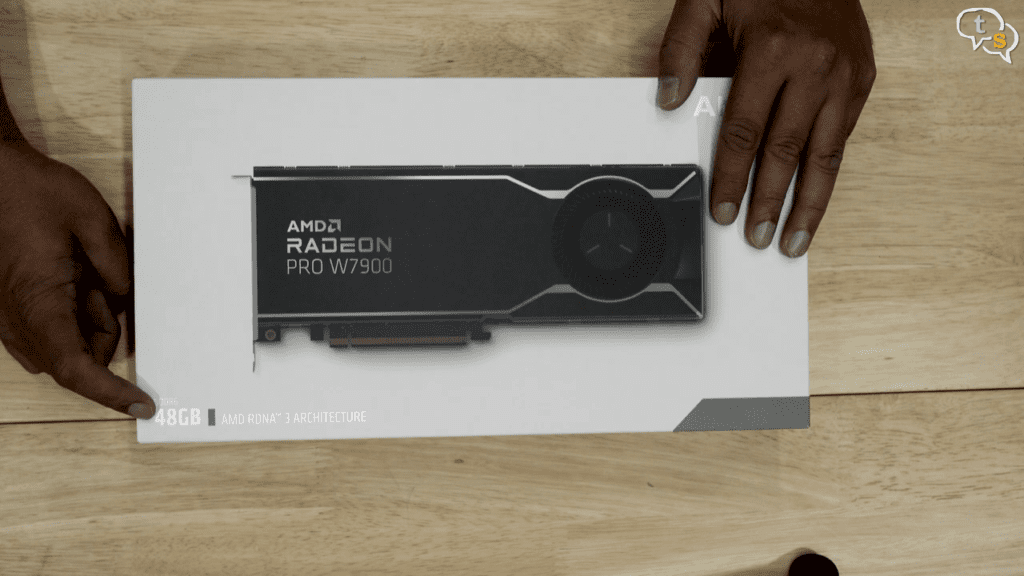
The first in the set is the AMD pro w7900 workstation graphics card. It comes equipped with 48 gb of ECC vram and uses the RDNA3 architecture.
This one is the big daddy of them all, at present
These cards are made by AMD themselves.
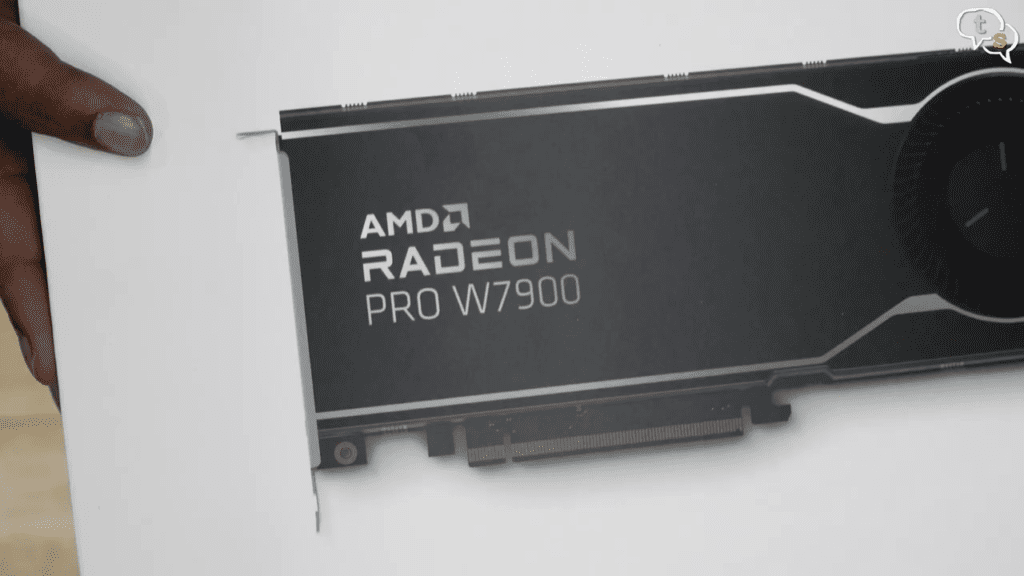
Love the premium white box.

Open for exceptional performance. The inside slides out and wow, so cool. AMD pro cards are designed for performance, stability and reliability. These cards are used to crunch tons of data, and they have to be designed to run for days, years even continuously, and the pro cards do just that.
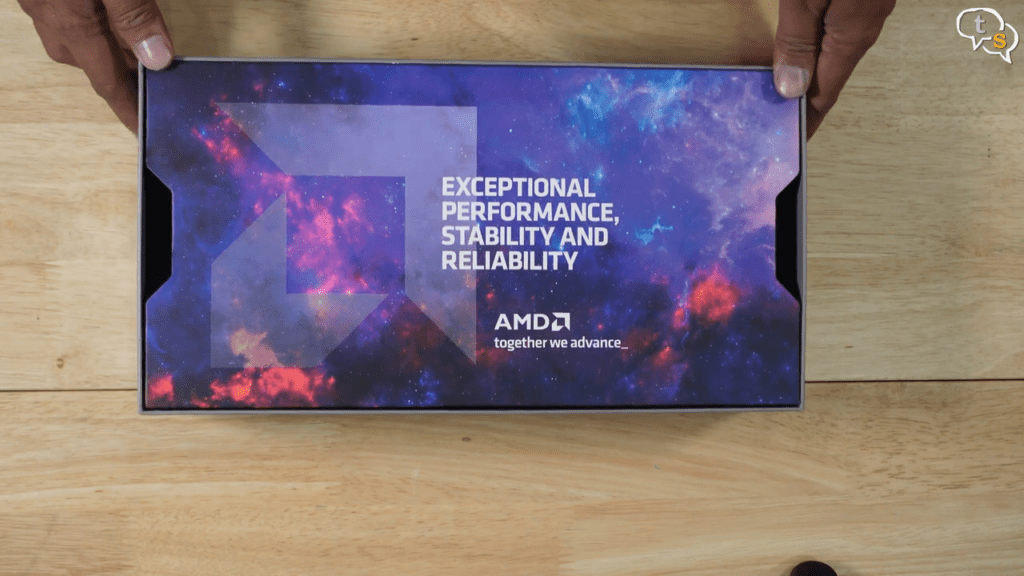
Remove the cover on top and the card looks so beautiful.
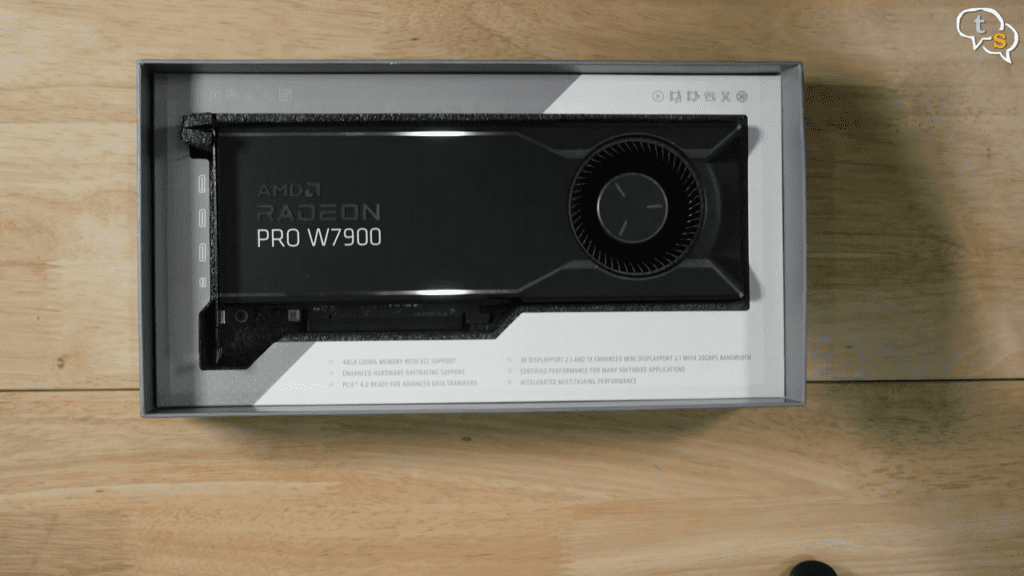
I love the chrome accents on the card, and it has only one fan on the side.
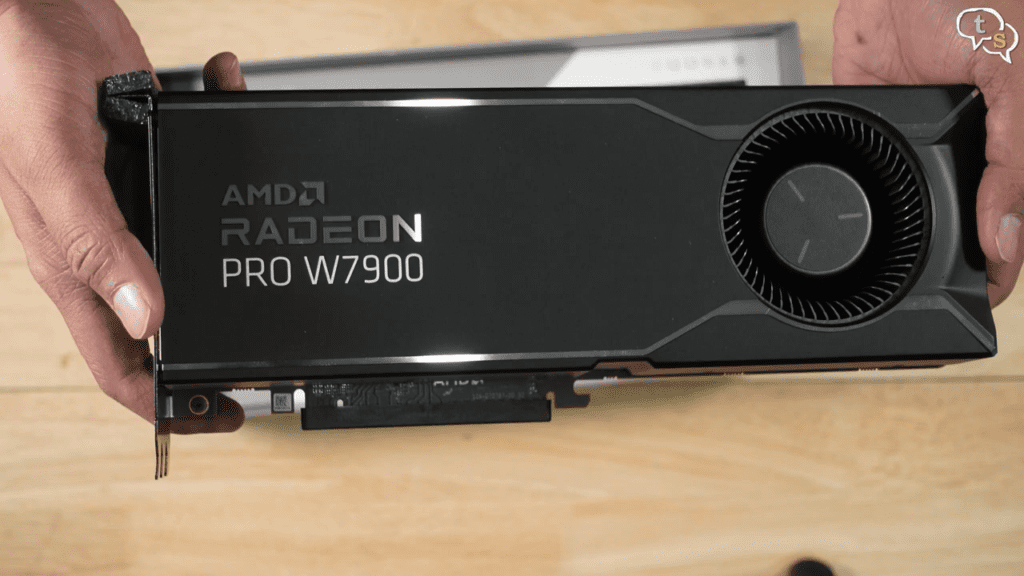
Heavy, we have Radeon pro w7900 written on the back.
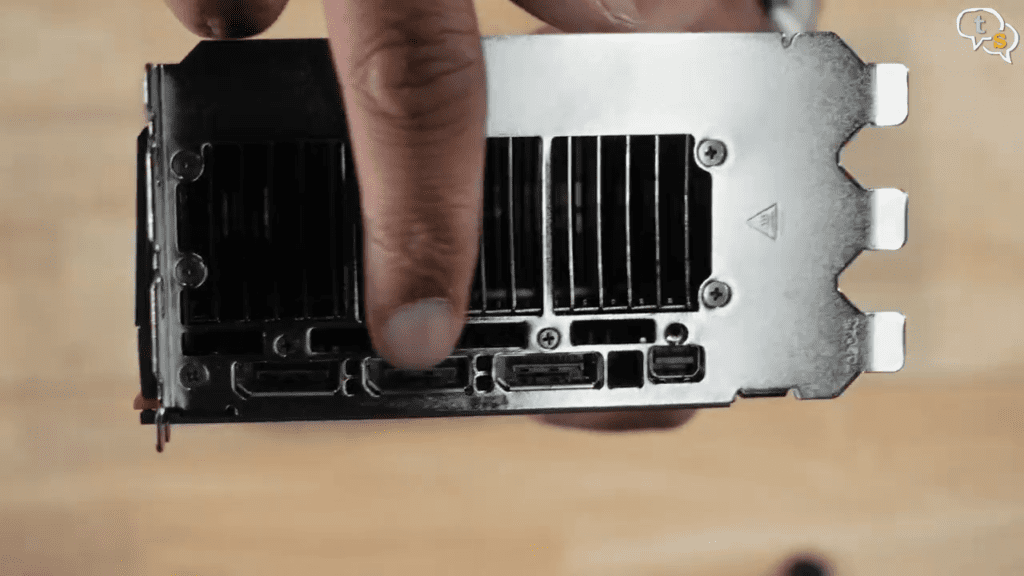
It’s a triple slot card and it supports and connectivity wise we have 3 DisplayPort 2.1 ports and one enhanced mini display port.
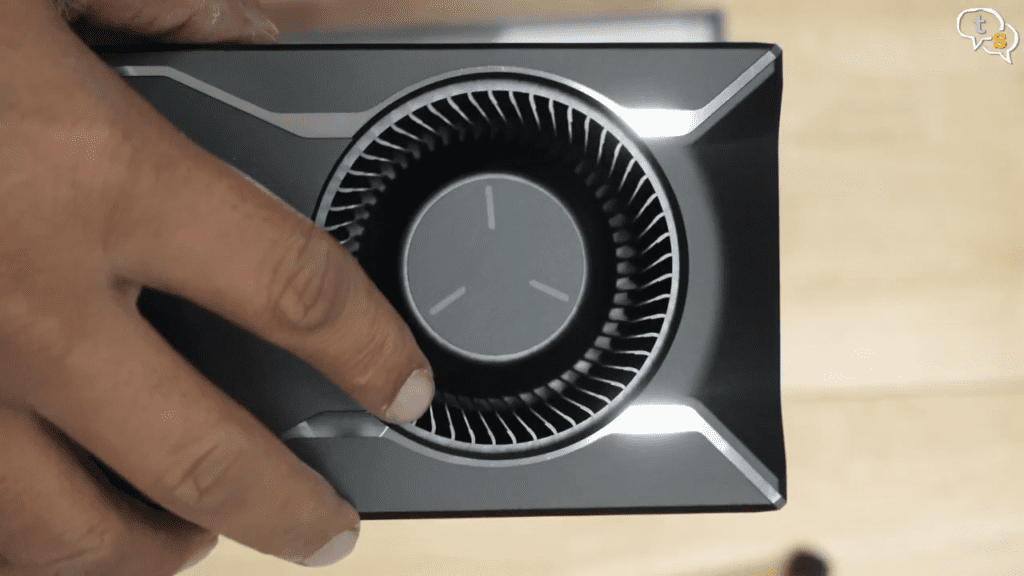
This big vent here indicates that it’s a blower type and the hot air would blow out the back through here.
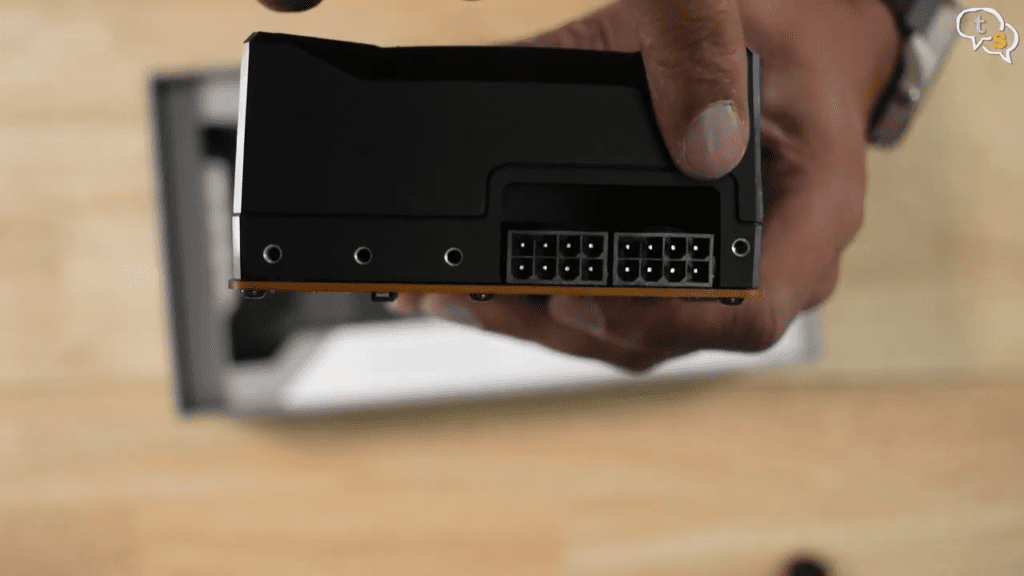
And there are two power connectors on the side which are both 8 pin.
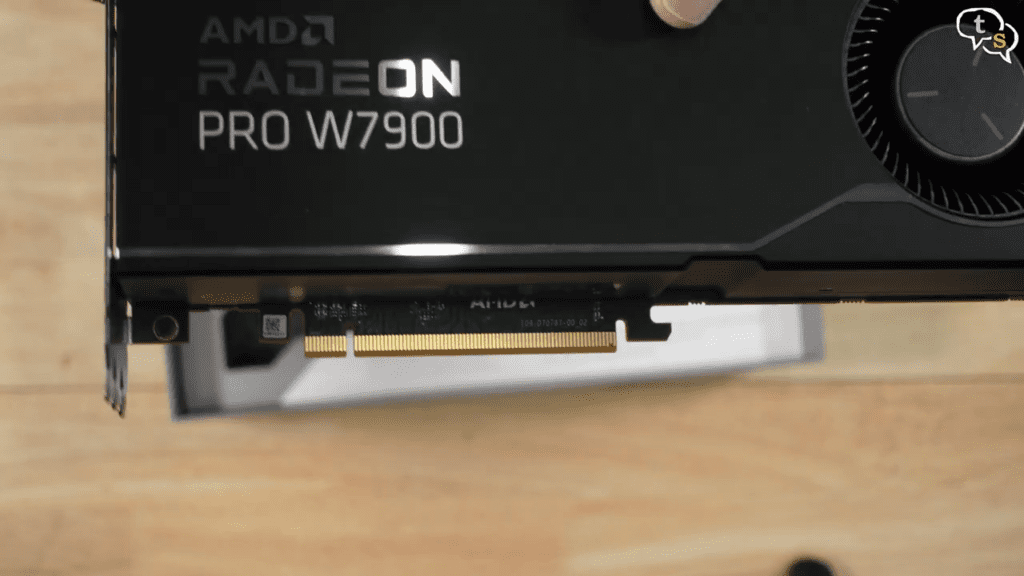
Here’s the connector PCI express 4.0 ready.
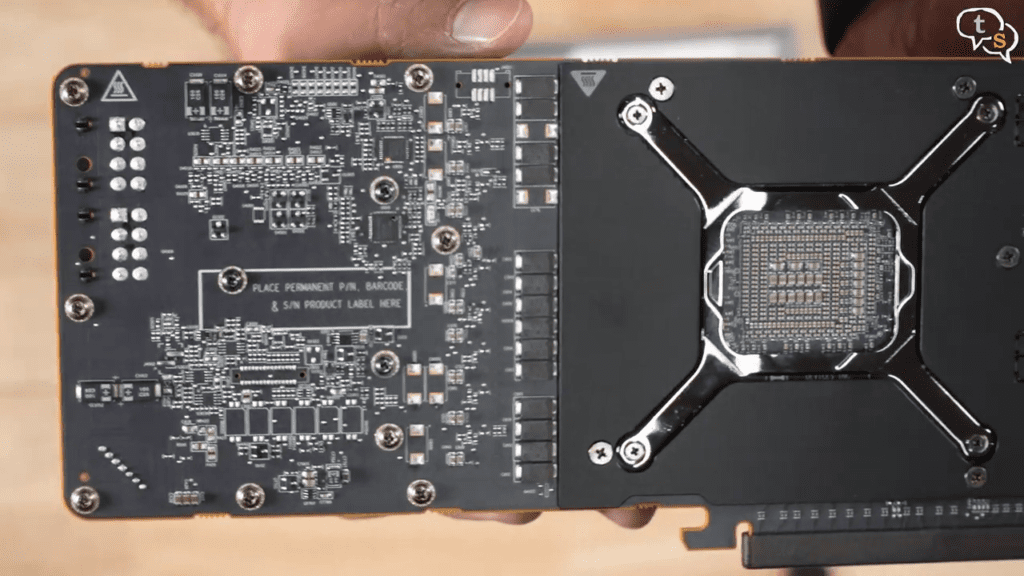
Here’s the back of the card.
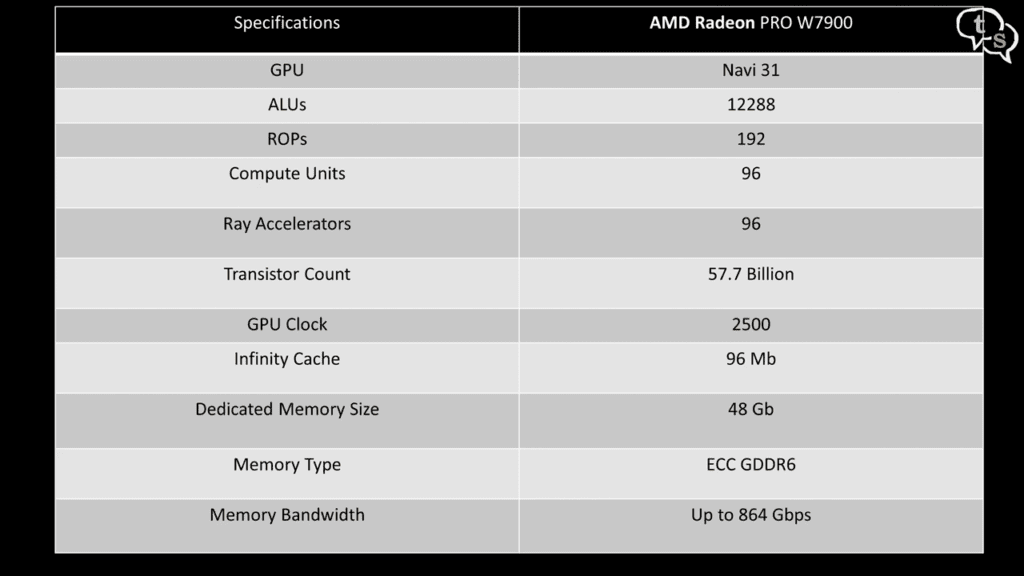
Specs wise the w7900 uses the rdna3 architecture, has performance of 61.32 teraflops
Comes with 96 ray accelerators, 864 Gb/s memory bandwidth, using a 384 bit memory interface with a peak 295 watt TBP.
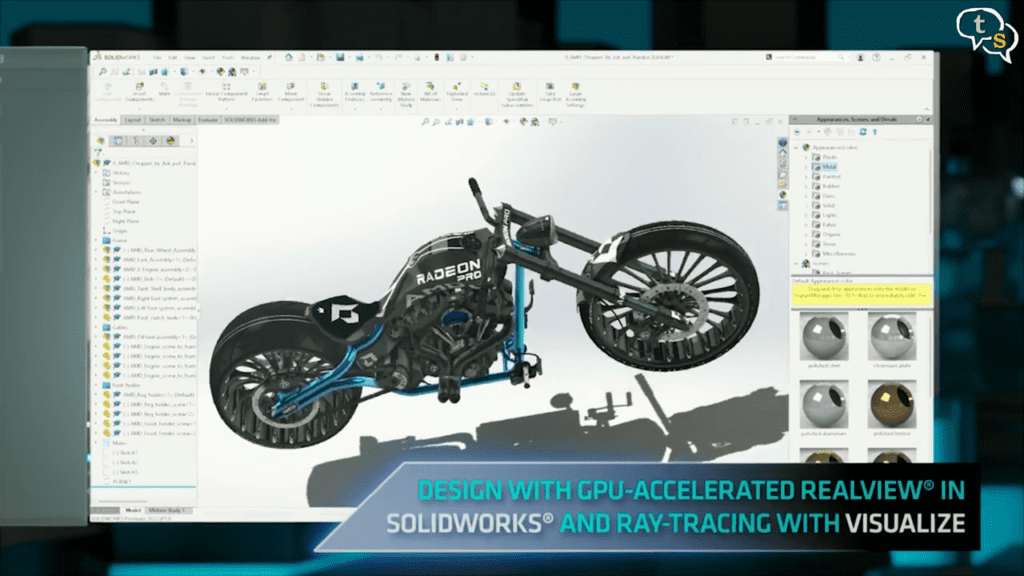
It’s designed for workstation applications like architecture and construction, Film effects and animation, AI computation.
The drivers are certified so there should be no stability issues which are required in a work environment as downtimes cost money.
Load up larger 3d Models, multitask with ease, handle decoding heavier RAW media, run larger displays, compute complex simulations faster. That’s what AMD pro cards bring to the table.
Stability and reliability are a priority for the AMD Pro GPU’s.
Supported technologies:
AMD Remote Workstation – AMD Radeon™ Media Engine – AMD Software: PRO Edition – AMD Radeon™ VR Ready Creator – AMD EyefinityTechnology6 (Professionals)
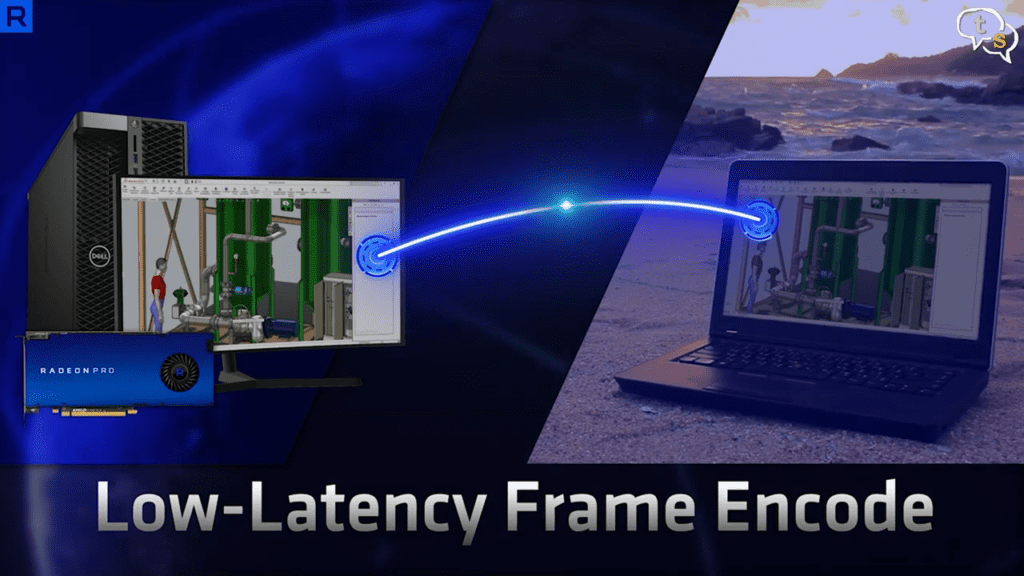
AMD Remote Workstation: Access your physical workstation from virtually anywhere with rich graphics acceleration via leading remote visualization tools.
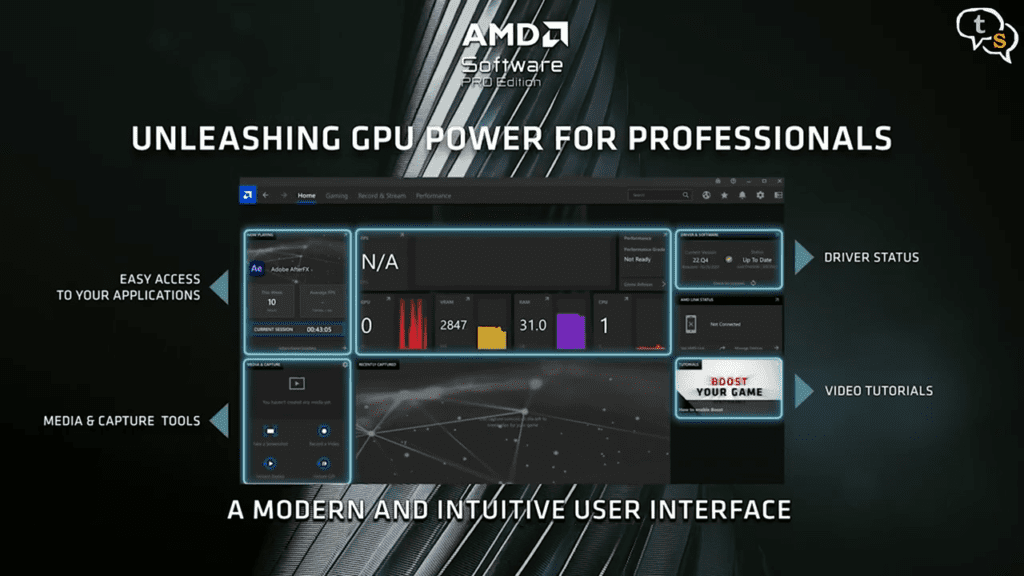
AMD Software: PRO Edition comes with a graphics driver you can trust and offers intelligent features to help improve your productivity, all accessible through a modern and intuitive user interface.
AMD Radeon™ VR Ready Creator: Empowering VR content creators with amazingly powerful and capable development tools.
Supported API’s
DirectX®: 12.0 Ultimate – OpenCL™: 2.0 – OpenGL®: 4.6 – Vulkan®: 1.3.2xx
Rendering Formats:
– 2x Encode (H265/HEVC, 4K H264) – 2x Decode (H265/HEVC, 4K H264) – 1x Encode & Decode (AV1)
Now this is something to take note of, due to the implementation of display port 2.1 we can run upto a 12k display, that’s just mind blowing.
So the resolution combinations supported are
4 , 4k DCI (digital cinema initiative) displays at 120 hz or 2 , 6 k displays 12 bit hdr at 60 hz, or 1, 8k display at 12 bit hdr at 60 hz or one 12k display with DSC.
4x 4096 x 2160 (4K DCI) @ 120Hz with DSC – 2x 6144 x 3456 (6K) 12-bit HDR @ 60Hz Uncompressed – 1x 7680 x 4320 (8K) 12-bit HDR @ 60Hz Uncompressed – 1x 12288 x 6912 (12K) @ 120Hz with DSC
So I don’t have many professional workstation class workloads to run on these cards, but let’s see what we can. To take advantage of this card we need a cpu that can push the data to it fast enough, so for the test bed we have
The AMD threadripper 5975WX
128 Gb of RAM
Samsung 980 pro 2tb nvme ssd
The Asus WS WRX80E Sage SE motherboard to tie them all down
And the a 1600watt psu to power the whole thing.
Unreal Engine
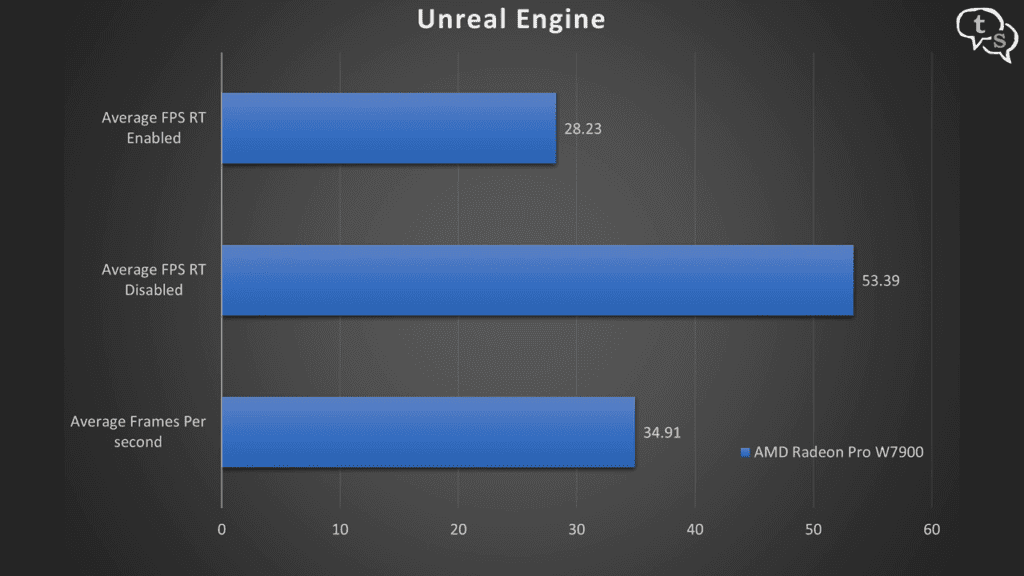
Running Davinci resolve and adobe premiere benchmarks which are not dependent of the GPU per se , they do take advantage of the hardware encoder/decoders. Pugetbench allows for benchmarking software like Davinci resolve, Adobe premiere, unreal engine, blender with repeatable and consistent tests.
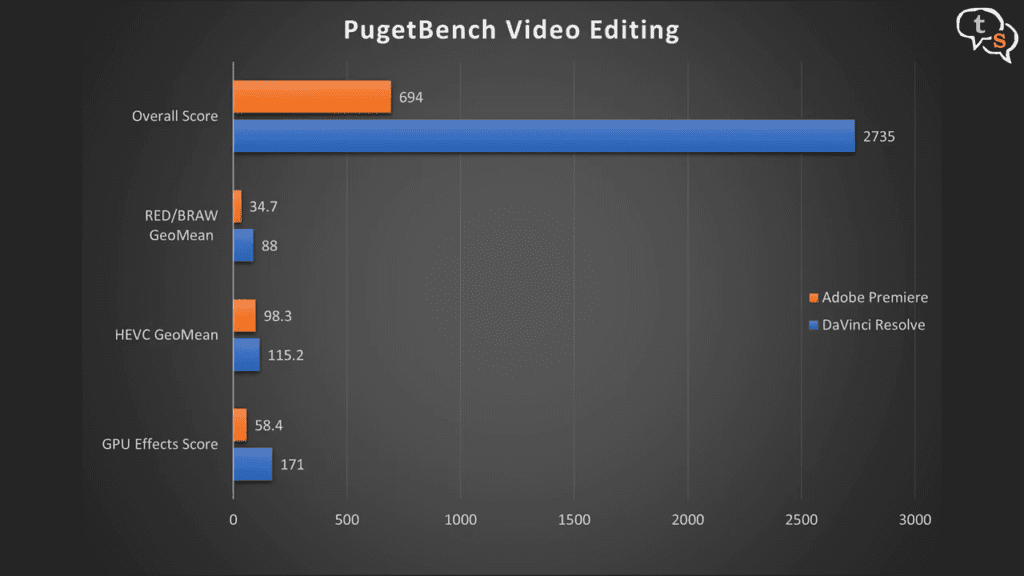
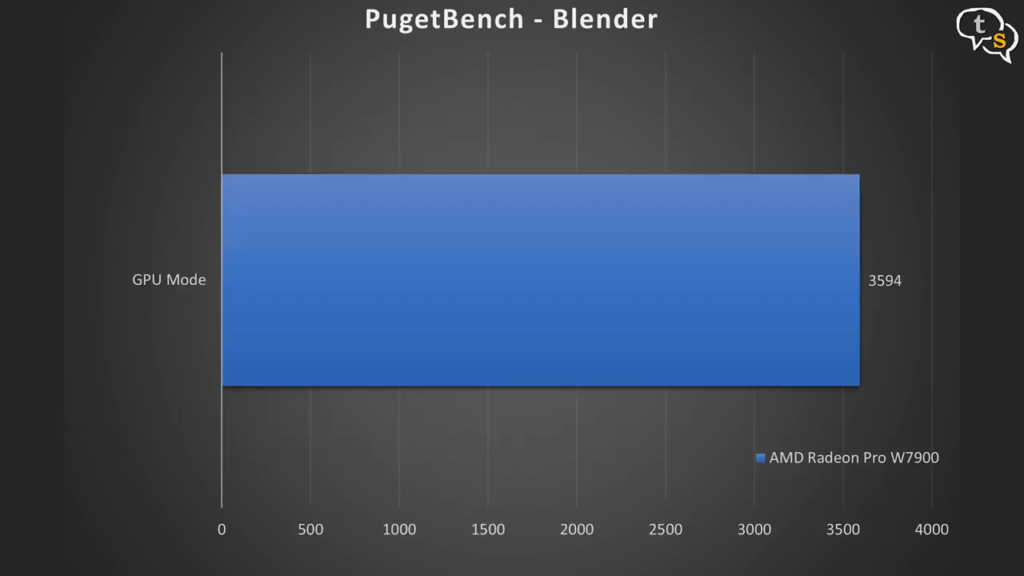
The w7900 performed of course better than the 6000 series siblings which is good, as newer is getting better. The hardware decoders are available on chip for H.264 and HEVC also called h.265 for encoding and decoding.
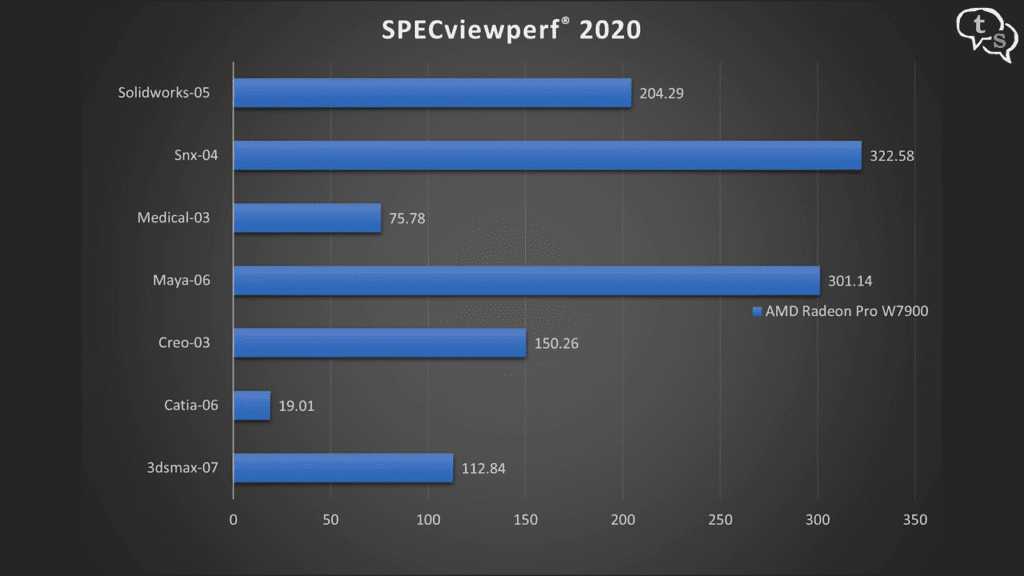
I ran SPECviewperf® 2020 benchmark which is the worldwide standard for measuring graphics performance of professional applications running under the OpenGL and Direct X application programming interfaces and these are the benchmark results. It is an 18 gig download, but if you would like to check your system performance too, this is the tool to use.
So would you pick one up, make sure to comment below.







